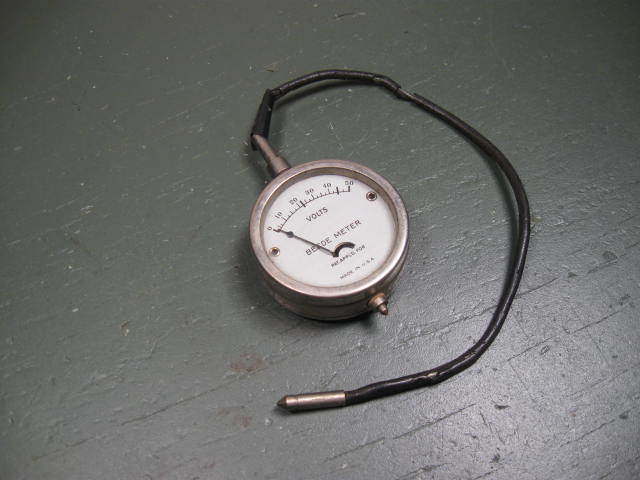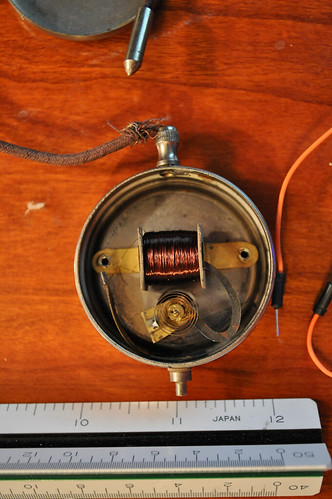
I purchased this vintage pocketwatch style voltmeter a little while ago. It's coming in the mail in a week and I'm eager to take it apart. There should be a decent amount of room in there to stuff a couple of coin cell batteries, an Arduino mini and some amplifier circuitry. The idea is to create a timepeice that ticks off the seconds, minutes, and hours with a simple little pwm shifter I wrote.
The prototype I've made with a 1-5v meter works well and looks a bit like http://hackaday.com/2009/11/12/too-much ... -pressure/
Code: Select all
/*
Voltmeter Clock - Code by Matthew Borgatti ***http://sinbox.org***
*/
int secondValue = 0;
int minuteValue = 0;
int hourValue = 0;
int clockPin = 9; //The input lead for the voltmeter. Connect the other lead coming from the meter to ground
int voltRange = 125; //voltRange defines the maximum operating voltage of your meter (max = 255 ~5v)
int voltVal = voltRange / 60;
int minutes = voltRange / 60;
int hours = voltRange / 12;
int value = 0; //value is a container for the current voltage
int switch1 = 10; //The input pin for the minute setting switch
int switch2 = 11; //The input pin for the hour setting switch
int pingPong = 0; //Setting pingPong to 1 will have the second hand pingpong between 0 and 255
void setup()
{
Serial.begin(9600);
}
void loop()
{
for(value = 0 ; value <= voltRange; value += voltVal) // fade in (from min to max)
{
secondValue += 1;
if(secondValue % 10 == 0)
{
int curHours = hours * hourValue;
analogWrite(clockPin, curHours);
delay(1000);
value += voltVal;
int curMinutes = minutes * minuteValue;
analogWrite(clockPin, curMinutes);
delay(1000);
value += voltVal;
secondValue += 2;
}
if(secondValue > 59)
{
secondValue = 0;
minuteValue += 1;
}
if(minuteValue > 59)
{
minuteValue = 0;
hourValue += 1;
}
if(hourValue > 11)
{
hourValue = 0;
}
if(value >= voltRange)
{
value = 0;
}
analogWrite(clockPin, value); // sets the value (range from 0 to 255)
delay(1000); // waits for 30 milli seconds to see the dimming effect
}
for(value = voltRange; value >=0 && pingPong == 1; value -= voltVal) // fade out (from max to min)
{
secondValue += 1;
if(secondValue % 10 == 0)
{
int curHours = hours * hourValue;
analogWrite(clockPin, curHours);
delay(1000);
value += voltVal;
int curMinutes = minutes * minuteValue;
analogWrite(clockPin, curMinutes);
delay(1000);
value += voltVal;
secondValue += 2;
}
if(secondValue > 59)
{
secondValue = 0;
minuteValue += 1;
}
if(minuteValue > 59)
{
minuteValue = 0;
hourValue += 1;
}
if(hourValue > 11)
{
hourValue = 0;
}
analogWrite(clockPin, value); // sets the value (range from 0 to 255)
delay(1000); // waits for 30 milli seconds to see the dimming effect
}
} I'd also like to know more about sleep functions that might exist for the Arduino. It would be nice to be able to conserve battery by having the clock keep the current time in memory in a shutdown mode until its woken up by a signal from an accelerometer or a button press to count out the time on the dial.
Thank you for reading. Rock on.

